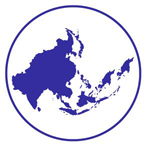Presentation Title
Family Magazines – Consumer Culture, Japan, & the Making of the Masses
Location
RCC Small Ballroom
Start Date
11-10-2013 1:45 PM
End Date
11-10-2013 3:15 PM
Abstract
Family magazines like Ie no hikari (Light of the Home) and Kingu (King) became the first periodicals to reach more than one million readers in mid-1930’s Japan. These powerfully influential publications, moreover, helped to naturalize the practice of reading magazines and sculpted average Japanese perceptions of what such a product looked like. These magazines extended throughout Asia in the 1920s-1940s across the entire Japanese empire and beyond. Our historical understanding of magazines as a composite media with political power can be usefully and critically expanded.
The visual mixing that occurred on the pages of these mass magazines and the manner in which they combined text and image, design and advertising shaped popular perceptions of print media in profound ways. Though the reader may not be conscious of it, the content conveyed in the text of a magazine cannot be separated from the accompanying visual material — the pictures, comics, art, advertising, and graphic design — because, all the elements are there together, to be perceived with the eye as smaller parts of an integrated whole.
The self-conscious nature of the birth and development of these magazines is particularly revealing about the process of naturalizing new consumption habits and the attendant shifts in cultural practices. I analyze the content and a significant sampling of images from these two publications over the 1920s and 1930s in order to suggest how the commercialized nature of magazines helped to provide a complementary layer of socialization and provided an important conduit of meaning making within mass culture.
Family Magazines – Consumer Culture, Japan, & the Making of the Masses
RCC Small Ballroom
Family magazines like Ie no hikari (Light of the Home) and Kingu (King) became the first periodicals to reach more than one million readers in mid-1930’s Japan. These powerfully influential publications, moreover, helped to naturalize the practice of reading magazines and sculpted average Japanese perceptions of what such a product looked like. These magazines extended throughout Asia in the 1920s-1940s across the entire Japanese empire and beyond. Our historical understanding of magazines as a composite media with political power can be usefully and critically expanded.
The visual mixing that occurred on the pages of these mass magazines and the manner in which they combined text and image, design and advertising shaped popular perceptions of print media in profound ways. Though the reader may not be conscious of it, the content conveyed in the text of a magazine cannot be separated from the accompanying visual material — the pictures, comics, art, advertising, and graphic design — because, all the elements are there together, to be perceived with the eye as smaller parts of an integrated whole.
The self-conscious nature of the birth and development of these magazines is particularly revealing about the process of naturalizing new consumption habits and the attendant shifts in cultural practices. I analyze the content and a significant sampling of images from these two publications over the 1920s and 1930s in order to suggest how the commercialized nature of magazines helped to provide a complementary layer of socialization and provided an important conduit of meaning making within mass culture.

Comments
Presentation is included in Panel 5: Modernity and the Self: Family Magazines, Fiction, and Western Music in Modern Japan